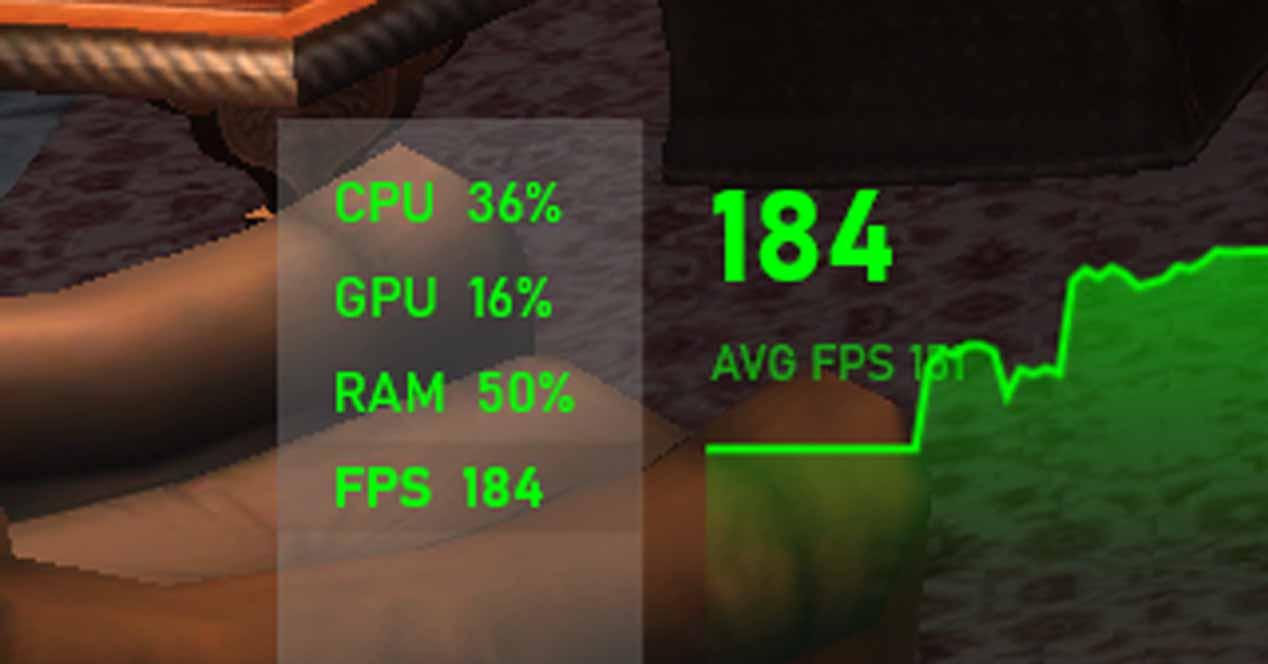There are many tools for measuring FPS, but in this article we want to focus on two of them for their simplicity, because although the first of them is not valid for all games in the strict sense of the word. run and only shows you the instant FPS. that you have at all times, it is so extremely easy to activate that it may go unnoticed by many users. We will see him.
How to see the FPS you have in games with Steam
Steam is the world’s most popular and widely used gaming platform, and it has features that are as simple as they are powerful, such as the ability to see the FPS we have in all games. This, moreover, is expandable not only to your Steam library, but it works with any game you have installed on your PC since the software allows you to add non-Steam games to the Steam library.
The key to this is that any game that is in the Steam library can be run from there, applying the app overlay which you can access at any time by pressing the SHIFT + TAB key combination. . Obviously, in order to be able to measure the FPS of games using Steam, you must first activate the option, then go to the Steam menu and select the “Settings” option. Then in the left panel, you need to select the “In-game” menu.
In this menu you will see that there is the option “FPS counter in the game” in the central area, where there is a drop-down menu that allows us to select where we want the counter to be seen and if we have it. want to be seen with a high contrast color to stand out.
After configuring the setting you prefer, click OK and start the game you want. You will see that in the corner that you have configured in the menu appears a small FPS counter that will show you in real time the FPS you have in the game.
In the example above, the normal method shows that you barely see and go unnoticed unless you know it’s there. If you want it to be seen more clearly, you can enable the high contrast option in the menu that we have shown before.
Measure FPS using FRAPS
FRAPS is a tool that was originally designed to be able to record video games, but it also includes a benchmarking tool that helps us measure FPS in any game without restrictions. You can download FRAPS for free from its website, and the installation has no mystery, it will just ask you to select where you want to save the app and that’s it. It is important to define a specific location for the installation as the performance report will automatically be saved in this same location.
Once installed, you must obviously open the FRAPS application, and to configure what interests us you must go to the FPS tab where you will see the following screen.
At the top you can select where you want the files with the performance data to be saved (we will see how to do this below), while in the central area you can configure with which key you want FRAPS to start the measurement and with which key you want to see or stop seeing the overlay, as well as in which corner of the screen you want it to be seen. Obviously and like with Steam, FRAPS will show you FPS in games in real time.
Likewise, in the Reference Settings section, you need to mark what you want to save to the file; It is recommended to mark at least FPS and MinMaxAvg, because this way we will have all the performance data that we will need in most cases which includes instant FPS, minimums, maximums and average FPS. Once everything you need is configured and without closing FRAPS, simply open the game in which you want to measure FPS and press the key you have configured to start the measurement.
As you can see in the screenshot above, the FPS displayed by FRAPS are much larger and in yellow (in red while you are measuring performance), and can be used simultaneously with Steam FPS measurement.
Working with the FRAPS Reference File
Once the benchmark has been run for as long as you want (which, as you have seen, is also configurable from the FRAPS interface), some files will be created in the Benchmarks folder in the directory where you installed FRAPS .
These files have identifying names with the name of the game, the date and time they were taken, and their own name indicates what they are: in the image, the first is FPS measurement while the second is the measure. Minimum, maximum and average FPS. When you open one of them, you will find a comma delimited data file with which you can view the measured values and work with them as needed.
To manage this data, you can open the .csv file with Excel, and in the above menus select the Data menu then the Text in columns button. Check the Tab and comma option and voila, the data in the file will be separated into columns to be able to use them according to your needs.
You’ve seen it before, FRAPS and Steam allow us to see the real-time FPS of any game, while FRAPS also allows us to get data like minimum, maximum and average FPS to be able to work with. them later, and in fact it’s a tool that we analysts use a lot to measure performance in games.

















